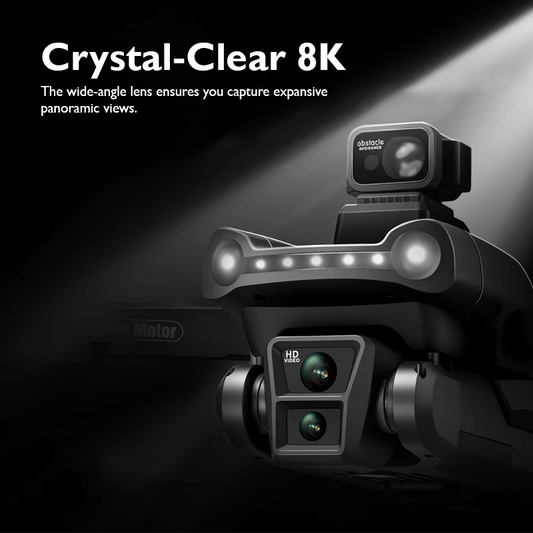The Best Practices for Drone Photography in Urban Settings

Drone photography has revolutionized the way we capture the world around us, offering a unique perspective that was once reserved for professional filmmakers and photographers. Urban settings present a plethora of opportunities for stunning aerial shots, but they also come with their own set of challenges. To help you navigate the complexities of urban drone photography, we've compiled the 10 best practices to ensure you capture breathtaking images while adhering to safety and legal regulations.
1. Know the Regulations
Before you take flight in urban areas, it's crucial to familiarize yourself with local regulations regarding drone usage. Many cities have specific rules and restrictions in place, such as no-fly zones and altitude limitations. By understanding and adhering to these regulations, you can avoid legal issues and ensure a safe flight.
2. Plan Your Flight

Planning is key to successful urban drone photography. Before you launch your drone, scout the area and identify points of interest that you want to capture. Pay attention to landmarks, architecture, and potential obstacles such as power lines or tall buildings. Creating a flight plan will help you maximize your time in the air and capture the best possible shots.
3. Choose the Right Time of Day

The time of day can significantly impact the quality of your aerial shots. In urban settings, early morning and late afternoon tend to offer the best lighting conditions, with soft, warm tones that add depth and dimension to your images. Avoid midday when the sun is directly overhead, as harsh shadows can detract from the overall aesthetic of your photos.
4. Use ND Filters

Neutral density (ND) filters are essential tools for drone photographers, especially in urban environments where there's a lot of glare and reflections from buildings and pavement. ND filters help reduce the amount of light entering the camera lens, allowing you to achieve a more balanced exposure and capture sharper, more vibrant images.
5. Mind Your Composition

Composition plays a crucial role in creating compelling drone photos. Experiment with different angles, perspectives, and framing techniques to add visual interest to your shots. Pay attention to leading lines, symmetry, and the rule of thirds to create dynamic compositions that draw the viewer's eye.
6. Experiment with Camera Settings

Most drones offer a range of camera settings that allow you to customize your shots to suit your creative vision. Experiment with settings such as aperture, shutter speed, and ISO to achieve the desired effect. For urban photography, a smaller aperture (higher f-stop) can help maintain sharpness throughout the frame, while a slower shutter speed can create motion blur for dynamic shots of traffic or crowds.
7. Focus on Points of Interest

Urban landscapes are full of interesting focal points that can elevate your drone photos to the next level. Whether it's iconic landmarks, bustling city streets, or architectural details, focus on capturing the unique character of the urban environment. Look for opportunities to highlight contrast between old and new, natural and man-made elements to tell a compelling visual story.
8. Practice Safe Flying

Safety should always be your top priority when flying a drone, especially in densely populated urban areas. Always maintain line of sight with your drone and avoid flying near people, buildings, or other obstacles. Be mindful of weather conditions, such as wind and precipitation, which can affect the stability and control of your drone. And remember to respect the privacy of others by avoiding intrusive or disruptive flight paths.
9. Edit with Care

Post-processing is an essential step in the drone photography workflow, allowing you to fine-tune your images and bring out their full potential. Use editing software such as Adobe Lightroom or Photoshop to adjust exposure, contrast, color balance, and other parameters to enhance the mood and atmosphere of your photos. But remember, less is often more – strive for natural-looking edits that enhance the beauty of the scene without overwhelming it with excessive effects.
10. Keep Learning and Experimenting
Drone photography is a constantly evolving art form, and there's always something new to learn and explore. Take advantage of online tutorials, workshops, and community forums to expand your knowledge and skills. And don't be afraid to push the boundaries of your creativity by experimenting with different techniques and styles. The more you practice and explore, the more your urban drone photography will continue to evolve and improve.
Mastering urban drone photography requires a combination of technical skill, creative vision, and careful planning. By following these 10 best practices, you can capture stunning aerial shots that showcase the unique beauty and energy of urban environments while ensuring safety and compliance with regulations. So grab your drone, take to the skies, and unleash your creativity in the bustling streets and towering skyscrapers of the cityscape.
Explore a variety of drones at our online drone store!
Happy flying!









